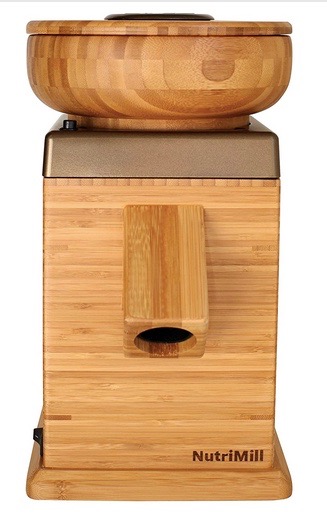Storing Wheat for the Best Low Cost Nutrition Available
Storing wheat is a great way to have a lot of food on hand at a low cost, that doesn't take up much room and has the best nutrition possible for you and your family. If properly stored, wheat can last not just for decades, but for centuries.

A few years ago, stored grains were found in one of the ancient tombs in Egypt. The seeds were still viable, and when planted, grew.
Not only does it store well, but wheat is a versatile food, that can either be ground into flour, cooked as cereal or even sprouted for jam-packed nutrition.
But if you have never eaten much wheat, be sure to buy some wheat berries and try them for awhile before making a huge investment.
A few years ago, I was growing and eating wheat sprouts daily when I eventually had a full-blown asthma attack. It turns out that I had become allergic to wheat.

There is nothing quite so depressing as making a huge investment and then realizing it won't work for you and your family. So try it out first by buying from a local health food store that sells it in bulk.
That being said, wheat berries are the ultimate staple for your preparedness pantry, and there are several ways you can store wheat to ensure you have a food supply that will last you for years. Here are a few tips on storing wheat.
Storing Wheat
Some Tips
What you need to realize is that all wheat (and for that matter any food made from grains) have microscopic eggs that could possibly hatch if exposed to the right conditions. If you don't want critters hatching out from your wheat, you're going to have to make sure your wheat isn't exposed to oxygen.
The best way to ensure that doesn't happen is to vacuum seal your wheat either in half-gallon jars or in freezer bags. Normally I don't recommend vacuum sealing dry goods in plastic, but I have stored wheat berries in plastic vacuum sealer bags, and it didn't seem to impact the wheat.
I personally prefer keeping my wheat vacuum sealed in mason jars, because I can get some wheat out and then easily reseal the jar. If mason jars are too pricey for you, then vacuum seal your wheat in the plastic bags, and then place them in five-gallon pails with lids. They'll stay well for years that way.
Other harmful elements that could potentially ruin your wheat are moisture and warmth, so storing wheat in a cool, dry place is crucial to protect your investment.
By the way, if you can't afford a vacuum sealer, you can also store wheat in freezer bags. Just press out as much air as you can before closing them. Then place the filled bags in a five-gallon plastic container and store it in a cool, dry place. I used to store wheat that way before I had a vacuum sealer, and again, it lasted for years without any problems.
Make Sure Your Wheat is Organic
I'm sad to say that some of the grain that is now growing in the United States is GMO wheat. The folks who market this stuff swear it's going to save the world from starvation and that it won't harm you a bit.

Mind you, folks a century ago were pushing tapeworms as diet pills and arguing that smoking cigarettes didn't hurt you one bit either. Protect your family from GMOs by buying locally grown, organic non-GMO wheat. It will cost a little extra, but the peace of mind will be well worth it.
Storing Wheat - How Much?
That, of course, depends on how many people are in your family, whether you own a grain mill, and whether you make bread every day. Twenty five pounds of organic hard red wheat berries from my local food coop costs $18. If you bought 250 pounds, the cost would be $180.
If you have a family of four, and if you ate wheat every day (baked two loaves of bread twice a week, for example and also ate it regularly at breakfast for cereal), it would probably last you about a year. Again, it also depends on whether you plan on baking other items, such as cakes, cookies or pizza, one of our favorites.
So Why Store Wheat?
Wheat is is packed with nutrition. Storing wheat makes far more sense than investing in and storing bags of flour, simply because any flour you buy at the store has had most of the nutrients taken out.
You're essentially buying dead food that will provide your body with few vital nutrients.
A good quality grain mill like this one will render your wheat berries into flour in minutes.
That's because the natural oil found in wheat berries goes rancid within about 12 hours after you grind it. The only way flour companies can make a storable flour is by stripping most of the nutritious parts out.
But if you invest in wheat berries and you own a grain mill, you can have your own freshly ground flour in minutes for your baking needs. Not only will it be loaded with all sorts of great vitamins, it will also taste far better than anything you bake with conventional flour. My grain mill has ruined me for commercial flour. There's just no comparison.
Learn More About Being Prepared
Comments on Storing Wheat
Click below to see contributions from other visitors to this page...
What Are Your Comments About Storing Wheat? 




Do you have any comments? Write them here.
Comments on Storing Wheat 




Have comments? Post them here, and thanks!








New! Comments
Have your say about what you just read! Leave me a comment in the box below.